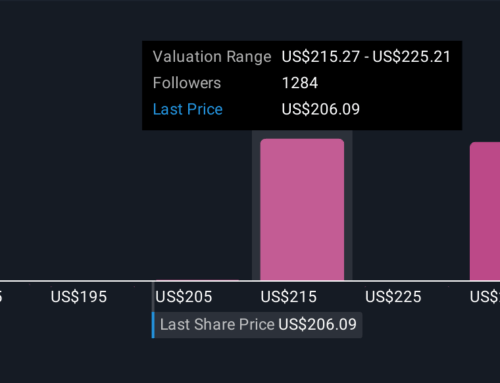You can contribute more to your 401(k) and IRA in 2026 — here’s how to boost your retireme
November 17, 2025
The IRS is giving Americans more room to grow their nest eggs. For the 2026 tax year, employees can contribute up to $24,500 into their 401(k), an increase from the $23,500 contribution limit in 2025 and the limit on annual contributions to an IRA has also increased to $7,500 in 2026, up from $7,000 in 2025.
That means workers who want to maximize their retirement savings have the opportunity to set aside a little more tax-deferred income in the year ahead — which is key, especially as inflation continues to rankle consumer spending.
Here are a few ways to maximize the benefits of the new contribution limits and enhance your retirement strategy in the new year.
Revisit your contribution percentage
If you’ve been contributing the same percentage of your paycheck for years, now’s a good time to adjust it. Even a small increase, such as 1% or 2%, can have a meaningful impact over time, especially with higher limits in place.
According to Fidelity, boosting your 401(k) contribution by just 1% each year can significantly increase your retirement balance without dramatically affecting your take-home pay. For example, if you’re 25 years old, earning $60,000 a year, and contributing 3%, increasing that by one percentage point each year until you reach 10% could grow your retirement balance by tens of thousands of dollars more by age 65 — assuming steady market growth.
Take full advantage of employer matching
Employer matches are one of the biggest boosts to your retirement savings — and they’re essentially free money. Make sure you’re contributing enough to receive your company’s full match, which is often 3% to 6% of your salary, depending on your employer.
While the $24,500 limit applies only to your own contributions, the combined employee and employer cap is $72,000 for 2026. That means even if you’re not able to max out your own contributions, your employer match could help you get closer to that combined total.
Max out catch-up contributions
If you’re age 50 or older, you can contribute an extra $8,000 to your 401(k) or $4,000 to a SIMPLE IRA in 2026. These catch-up contributions can help you make up for earlier years when you might not have been able to save as much.
For example, if you’re 55 and contribute the full $24,500 plus the $8,000 catch-up, that’s $32,500 total in 2026 — money that grows tax-deferred until retirement.
Don’t forget your IRA
If you’re not eligible for an employer plan or want to supplement one, an IRA offers another way to boost retirement savings. The $7,500 annual limit applies whether you choose a traditional IRA (which gives you a tax break now) or a Roth IRA (which offers tax-free withdrawals in retirement, depending on income eligibility).
Some robo-advisors offer IRA contribution matches of up to 3%, especially for new account holders. For example, Acorns provides a 1% match on new contributions to your Acorns Later retirement account with their Silver subscription, and a 3% match with the Gold subscription.
-
Minimum deposit and balance requirements may vary depending on the investment vehicle selected. No minimum required to open an account, $5 minimum to start investing
-
Fees may vary depending on the investment vehicle selected. Monthly plans include: Bronze ($3 per month), Silver ($6 per month), and Gold ($12 per month)
-
Robo-advisor: Acorns Invest IRA: Acorns Later includes Traditional, Roth, SEP IRAs, 401(k) Rollover Investment accounts for kids: Acorns Early
-
Diversified ETFs which include more than 7,000 stocks & bonds
-
“Money Basics” blog and Grow + CNBC website
Terms apply.
For a $5 monthly fee, Robinhood Gold members can also receive up to a 3% IRA match on contributions, but to qualify, you must remain a Gold member for at least one year and keep the matched funds in your IRA account for a minimum of five years. If the Gold subscription is too costly, non-Gold members can still benefit from a 1% match on both IRA contributions and eligible transfers.
-
Minimum deposit and balance requirements may vary depending on the investment vehicle selected. No minimum required to open an account or to start investing
-
Fees may vary depending on the investment vehicle selected. Commission-free trading; regulatory transaction fees and trading activity fees may apply
-
Robinhood will add 1 share of free stock to your brokerage account when you link your bank account and fulfill the conditions in your promotion (you’ll be able to keep the stock or sell it after 2 trading days)
-
Brokerage account: Robinhood Financial commission-free investing
-
Stocks, ETFs, options trading, fractional shares, IPOs, plus certain cryptocurrencies through Robinhood Crypto (depending on where you live)
-
“Investing basics” blog, an online library of content and Robinhood Snacks daily newsletter
Terms apply.
Keep in mind that Roth IRA contributions come with income limits. To contribute up to the full amount, your modified adjusted gross income has to fall below certain thresholds. For single filers and heads of household, the phaseout range is $153,000 to $168,000. For married couples filing jointly, it’s $242,000 to $252,000. If your income is above these thresholds, you won’t be able to make contributions.
The best retirement savings account
Choosing the right retirement account depends on your financial goals, tax situation and employer benefits. If your workplace offers a 401(k), it’s often the best place to start, especially if your employer offers a matching contribution. But a Roth IRA can also be a powerful complement, as it can give you tax-free growth and more control over your investments. And if you don’t have access to a 401(k), a Roth IRA is an excellent alternative — especially if you expect to be in a higher tax bracket later in life.
We like the Roth IRA options at Fidelity because savers can choose to have the brokerage pick and manage their investments or do it themselves. Wealthfront also offers automated retirement portfolio management, allowing you to be completely hands-off.
-
Minimum deposit and balance requirements may vary depending on the investment vehicle selected. No minimum to open a Fidelity Go® account, but minimum $10 balance according to the investment strategy chosen
-
Fees may vary depending on the investment vehicle selected. Zero commission fees for stock, ETF, options trades and some mutual funds; zero transaction fees for over 3,400 mutual funds; $0.65 per options contract. Fidelity Go® has no advisory fees for balances under $25,000 (0.35% per year for balances of $25,000 and over and this includes access to unlimited 1-on-1 coaching calls from a Fidelity advisor)
-
Find special offers here
-
Robo-advisor: Fidelity Go® IRA: Traditional, Roth and Rollover IRAs Brokerage and trading: Fidelity Investments Trading Other: Fidelity Investments 529 College Savings; Fidelity HSA®
-
Stocks, bonds, ETFs, mutual funds, CDs, options and fractional shares
-
Extensive tools and industry-leading, in-depth research from 20-plus independent providers
Terms apply.
-
Minimum deposit and balance requirements may vary depending on the investment vehicle selected. $500 minimum deposit for investment accounts
-
Fees may vary depending on the investment vehicle selected. Zero account, transfer, trading or commission fees (fund ratios may apply). Wealthfront annual management advisory fee is 0.25% of your account balance
-
Stocks, bonds, ETFs and cash. Additional asset classes to your portfolio include real estate, natural resources and dividend stocks
-
Offers free financial planning for college planning, retirement and homebuying
Terms apply.
And as you plan your retirement strategy for 2026, remember the clock is still ticking on maximizing your 2025 contributions. If you have the ability to contribute more before the year ends, now’s the time to do it.
Retirement savings FAQs
How much can I contribute to my 401(k) in 2026?
The contribution limit for 401(k) plans in 2026 is $24,500. You can add another $8,000 if you are eligible for catch-up contributions, bringing your total up to $32,500.
What is the contribution limit for Roth IRAs?
The limit for both traditional and Roth IRAs is $7,500 from among all accounts. That breaks down to a little less than $300 a paycheck, for those getting paid bimonthly. Workers who are at least 50 years old can make an additional annual catch-up contribution of $1,100, bringing their total Roth IRA limit to $8,600.
How does a 401(k) match work?
If your workplace offers 401(k) matching, your employer contributes toward your plan up to a certain percentage: You might put 10% of your paycheck into your 401(k), for example, but your company only matches the first 5%.
Employer contributions can be a dollar-to-dollar or a partial match — say, 50 cents for every dollar you set aside — or a combination of the two. A company that offers to match 5% often may offer a full match up to 3% of your salary, then a partial match of 50 cents for every dollar on the next 2%.
Why trust CNBC Select?
At CNBC Select, our mission is to provide our readers with high-quality service journalism and comprehensive consumer advice so they can make informed financial decisions. Every article is based on rigorous reporting by our team of expert writers and editors. While CNBC Select earns a commission from affiliate partners on many offers and links, we create all our content without input from our commercial team or any outside third parties, and we pride ourselves on our journalistic standards and ethics.
Subscribe to the CNBC Select Newsletter!
Money matters — so make the most of it. Get expert tips, strategies, news and everything else you need to maximize your money, right to your inbox. Sign up here.
Catch up on CNBC Select’s in-depth coverage of credit cards, banking and money, and follow us on TikTok, Facebook, Instagram and Twitter to stay up to date.
Read more
Editorial Note: Opinions, analyses, reviews or recommendations expressed in this article are those of the Select editorial staff’s alone, and have not been reviewed, approved or otherwise endorsed by any third party.
Search
RECENT PRESS RELEASES
Related Post


